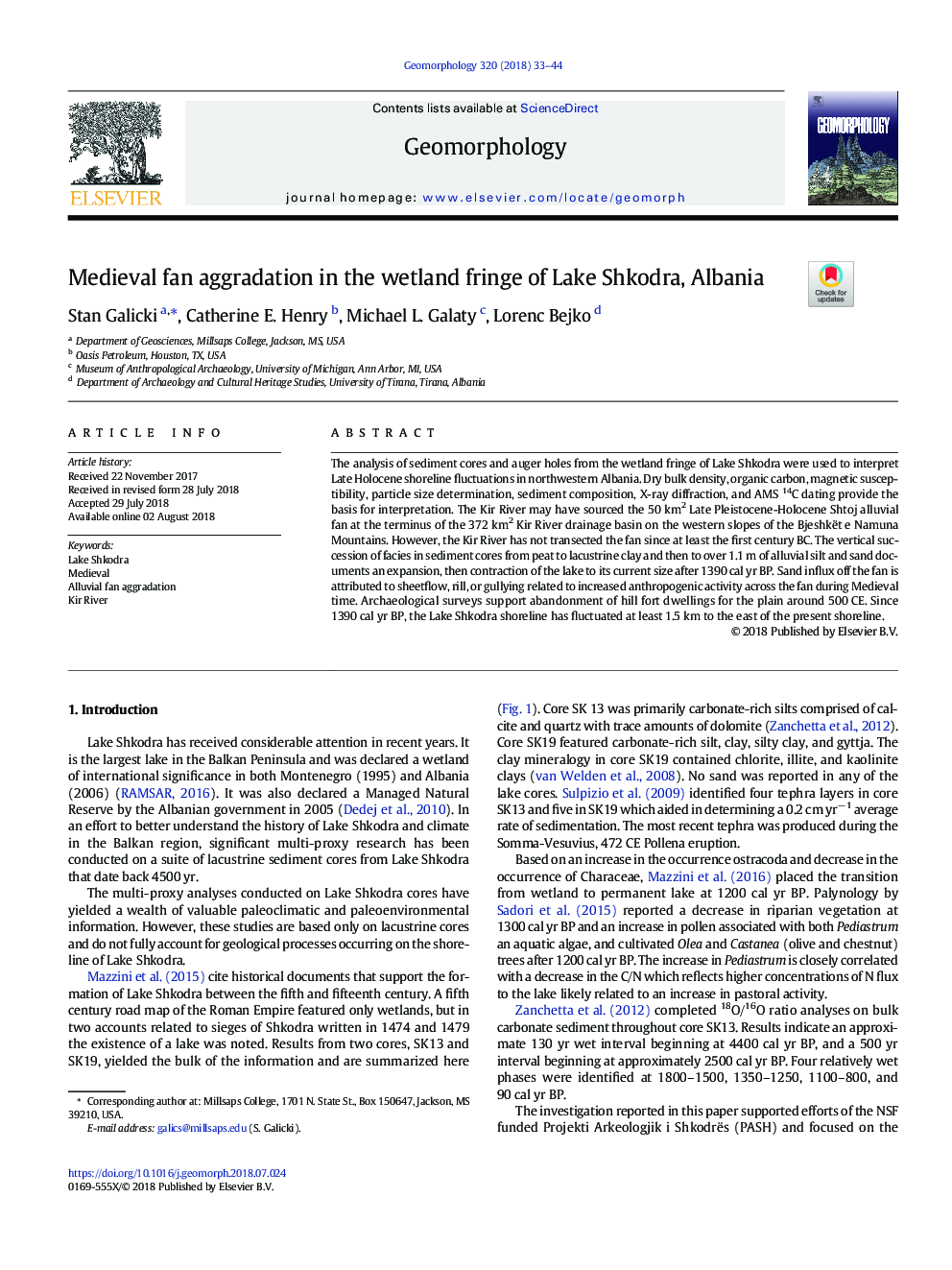| کد مقاله | کد نشریه | سال انتشار | مقاله انگلیسی | نسخه تمام متن |
|---|---|---|---|---|
| 8907899 | 1635330 | 2018 | 12 صفحه PDF | دانلود رایگان |
عنوان انگلیسی مقاله ISI
Medieval fan aggradation in the wetland fringe of Lake Shkodra, Albania
ترجمه فارسی عنوان
تضعیف فن های قرون وسطایی در حاشیه تالاب دریاچه شکودرا، آلبانی
دانلود مقاله + سفارش ترجمه
دانلود مقاله ISI انگلیسی
رایگان برای ایرانیان
کلمات کلیدی
دریاچه شکودرا، قرون وسطی، تضعیف فن آلیوالی، کیر رودخانه،
موضوعات مرتبط
مهندسی و علوم پایه
علوم زمین و سیارات
فرآیندهای سطح زمین
چکیده انگلیسی
The analysis of sediment cores and auger holes from the wetland fringe of Lake Shkodra were used to interpret Late Holocene shoreline fluctuations in northwestern Albania. Dry bulk density, organic carbon, magnetic susceptibility, particle size determination, sediment composition, X-ray diffraction, and AMS 14C dating provide the basis for interpretation. The Kir River may have sourced the 50â¯km2 Late Pleistocene-Holocene Shtoj alluvial fan at the terminus of the 372â¯km2 Kir River drainage basin on the western slopes of the Bjeshkët e Namuna Mountains. However, the Kir River has not transected the fan since at least the first century BC. The vertical succession of facies in sediment cores from peat to lacustrine clay and then to over 1.1â¯m of alluvial silt and sand documents an expansion, then contraction of the lake to its current size after 1390â¯calâ¯yr BP. Sand influx off the fan is attributed to sheetflow, rill, or gullying related to increased anthropogenic activity across the fan during Medieval time. Archaeological surveys support abandonment of hill fort dwellings for the plain around 500â¯CE. Since 1390â¯calâ¯yr BP, the Lake Shkodra shoreline has fluctuated at least 1.5â¯km to the east of the present shoreline.
ناشر
Database: Elsevier - ScienceDirect (ساینس دایرکت)
Journal: Geomorphology - Volume 320, 1 November 2018, Pages 33-44
Journal: Geomorphology - Volume 320, 1 November 2018, Pages 33-44
نویسندگان
Stan Galicki, Catherine E. Henry, Michael L. Galaty, Lorenc Bejko,
